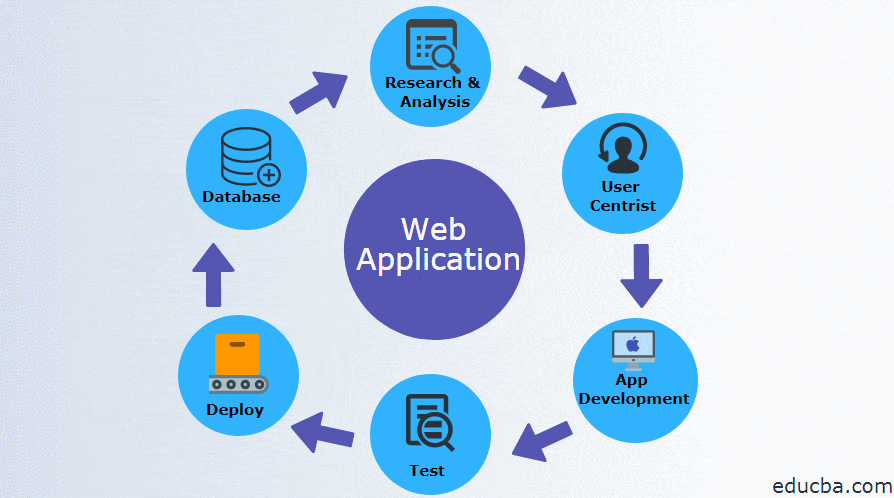In today’s fast-paced digital world, businesses are increasingly turning to web applications to provide seamless services to their customers. Web application development has become a key factor in streamlining business processes, improving user experience, and driving business growth. Whether you’re looking to create a customer-facing application or a tool for internal operations, the right web application can significantly transform how your business operates.
What is Web Application Development?
Web application development is the process of building software applications that are accessed and used through a web browser. Unlike traditional desktop applications, web apps are hosted on remote servers and can be accessed from any device with an internet connection. These applications are typically built using programming languages such as HTML, CSS, JavaScript, and backend technologies like PHP, Python, Ruby, and frameworks like React, Angular, and Node.js.
Why Web Application Development Matters?
- Accessibility & Convenience: One of the biggest advantages of web applications is their accessibility. Users can access web apps from any device, be it a desktop, laptop, or smartphone, as long as they have an internet connection. This flexibility is crucial in today’s mobile-first world.
- Cost-Effective: Developing a web application can be more cost-effective than building a separate mobile app for each platform (iOS, Android). A single web app can be used across all platforms, saving time and resources.
- Scalability: Web applications are highly scalable. As your business grows, your web app can easily be updated or modified to meet changing needs without the need for major redevelopment or new releases.
- Improved Security: Web applications offer better security features than traditional software. Sensitive data can be encrypted, and regular updates ensure that the application stays protected against evolving security threats.
- Centralized Data Management: With web apps, all user data and interactions are centralized in one place. This simplifies management, analysis, and reporting, making it easier for businesses to make informed decisions based on real-time data.
Benefits of Custom Web Application Development
Custom web application development offers a host of benefits for businesses:
- Tailored to Your Business Needs: A custom-built web application is specifically designed to meet the unique requirements of your business. It can be tailored to your goals, workflows, and user expectations, providing a personalized solution.
- Enhanced User Experience (UX): With a custom web app, you can focus on creating an intuitive user interface (UI) and smooth user experience (UX). A good UX design leads to higher customer satisfaction, increased engagement, and improved retention rates.
- Automation of Business Processes: A well-designed web application can automate repetitive tasks, reduce manual errors, and streamline business operations. This automation boosts productivity, saves time, and reduces operational costs.
- Integration with Other Systems: Custom web applications can be integrated with other third-party software or internal systems like CRM, ERP, payment gateways, and marketing tools, allowing for seamless data flow and improved collaboration.
Web Application Development Process
- Planning and Requirement Analysis: The first step in the development process is understanding the specific needs of the business. This involves gathering requirements, defining the target audience, and establishing the goals for the web application.
- Design: The design phase focuses on creating wireframes and mockups for the user interface. This step involves deciding the layout, color scheme, navigation, and overall aesthetics of the application.
- Development: During the development phase, developers write the code for the application using various programming languages and frameworks. This stage involves both frontend and backend development, ensuring the app is functional, responsive, and secure.
- Testing: Once the application is developed, it undergoes thorough testing. This includes functional testing, performance testing, security testing, and user acceptance testing (UAT) to ensure that everything works smoothly.
- Deployment: After successful testing, the web application is deployed to a live environment. It’s made available to the end-users, and the development team monitors its performance.
- Maintenance and Updates: Post-launch, the application requires regular updates and maintenance to fix bugs, add new features, and ensure it remains secure and efficient.
Key Considerations in Web Application Development
When building a web application, businesses need to consider several factors:
- Performance: Ensuring fast load times and smooth functionality is essential to keep users engaged.
- Mobile Responsiveness: Your web app should be fully optimized for mobile devices, considering the growing number of mobile users.
- Security: Protect sensitive user data with proper encryption and secure authentication methods.
- SEO: Optimize your web app for search engines to ensure it ranks well and is easily discoverable by users.
- Compliance: Make sure your web app complies with industry regulations such as GDPR, HIPAA, etc.
Conclusion
Web application development is an essential component of digital transformation for businesses looking to stay competitive. Whether you are seeking to automate internal processes, offer customer-centric services, or integrate your existing systems, a custom web application is the key to achieving these goals. By investing in high-quality web application development, businesses can streamline operations, enhance user experience, and unlock new opportunities for growth.



